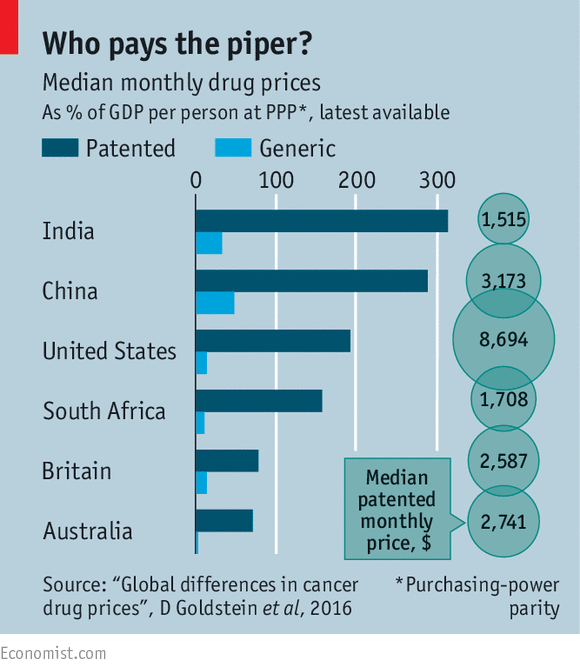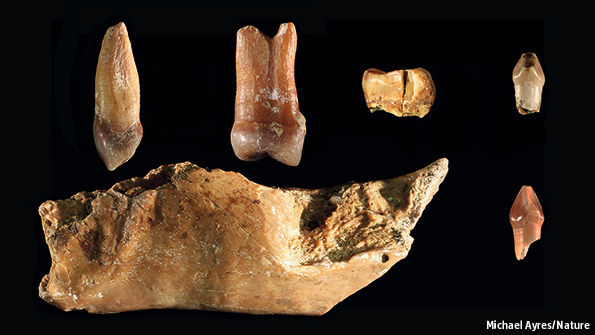Priced out

MANY Americans think they pay over the odds for drugs—particularly for cancer drugs. Some go so far as to suggest that other countries free-ride on their largesse, and that Americans are thus subsidising drug development, a situation which, they say, needs to be fixed by changing trade agreements.
A study unveiled at the American Society of Clinical Oncology’s meeting in Chicago this week looked into the matter. Daniel Goldstein of the Rabin Medical Centre, in Israel, and his colleagues examined the prices of 15 generic and eight patented cancer drugs in six countries (America, Australia, Britain, China, India and South Africa). They found that the highest prices were, indeed, paid by Americans. The median monthly retail price in the United States was $8,694 for patented drugs like Avastin, Gleevec and Herceptin, and $654 for generic drugs like docetaxel and paclitaxel. Of the countries looked at, India paid the least for its patented drugs ($1,515 a month), and South Africa the least for generics (a tiddly $120).
The story, though, does not end there. Dr Goldstein went on to look at how the prices of these drugs measured…Continue reading
Source: Economist












